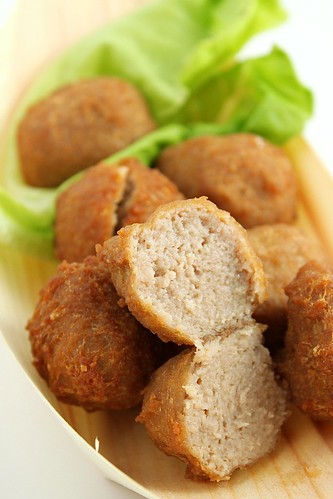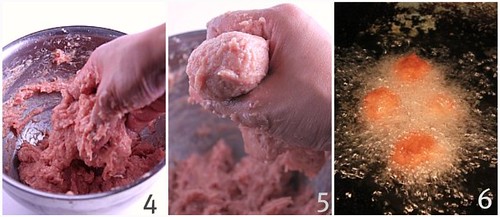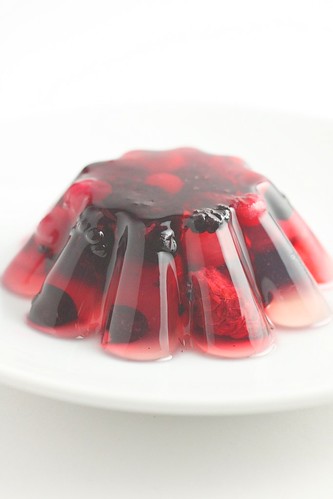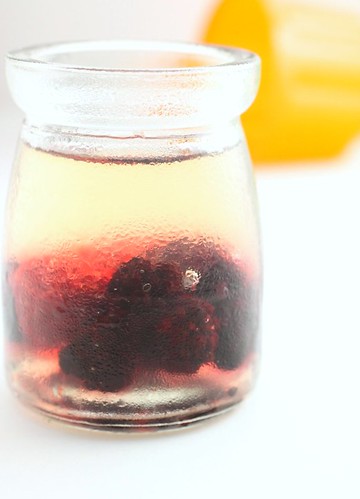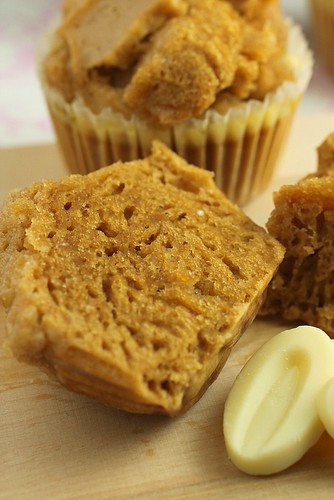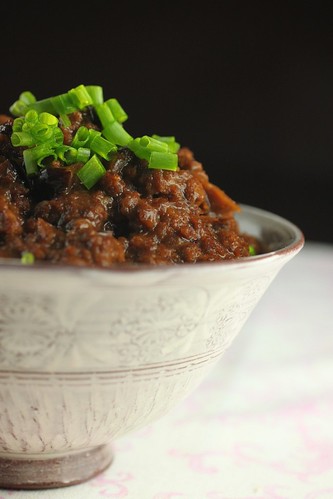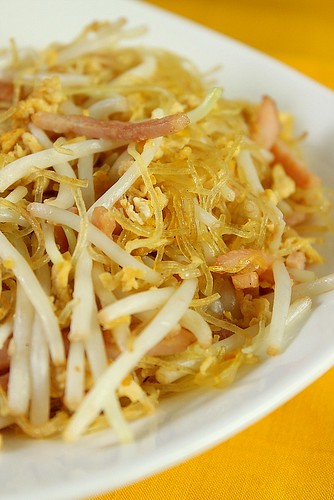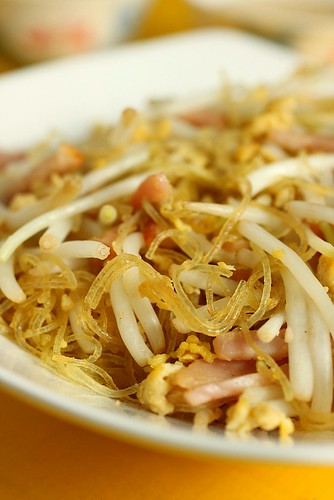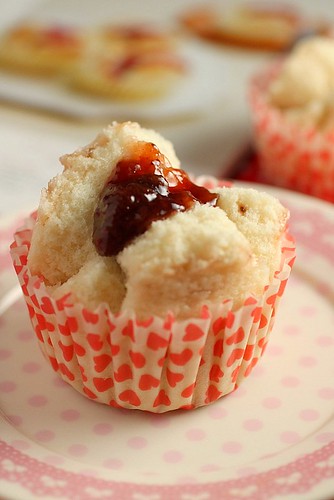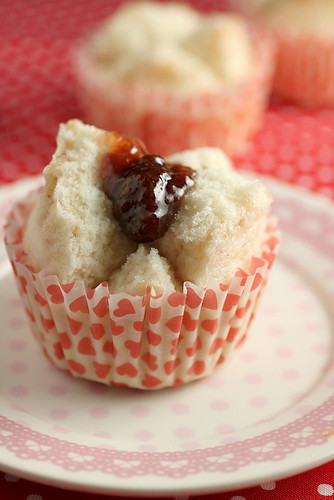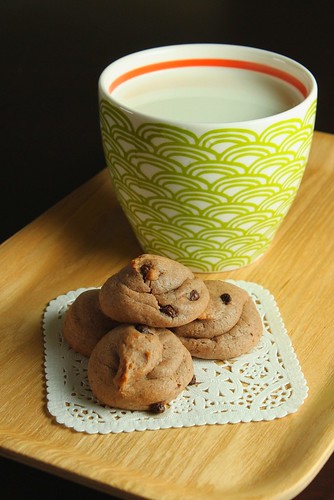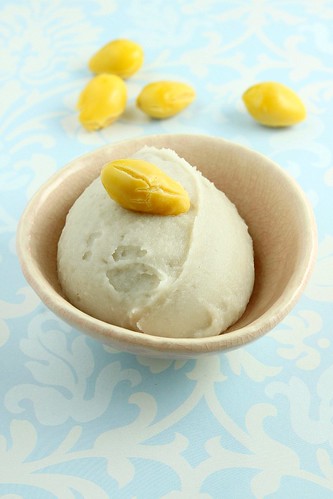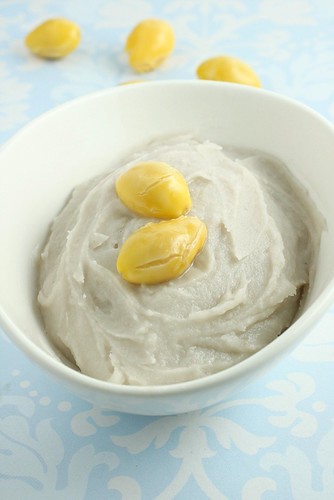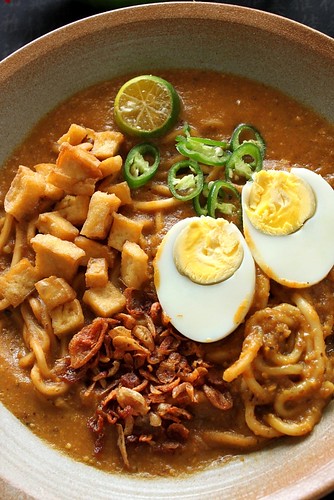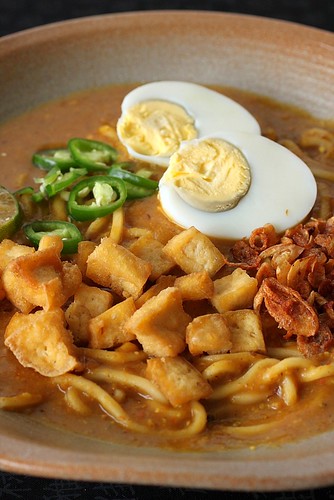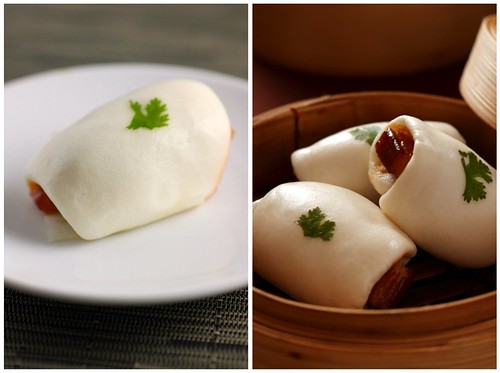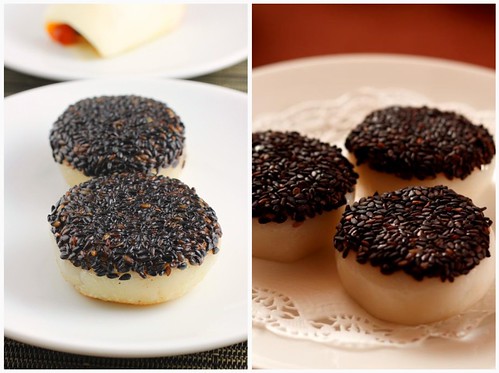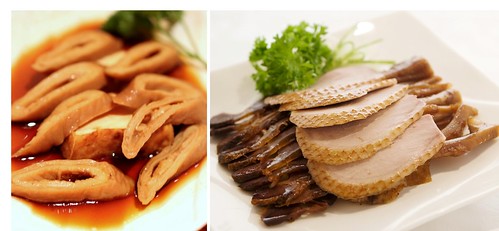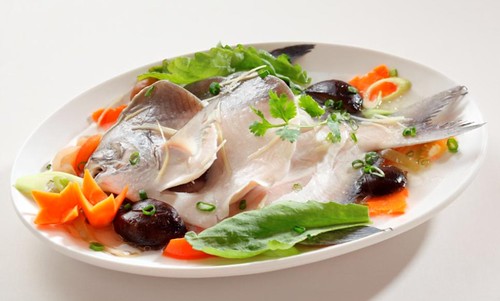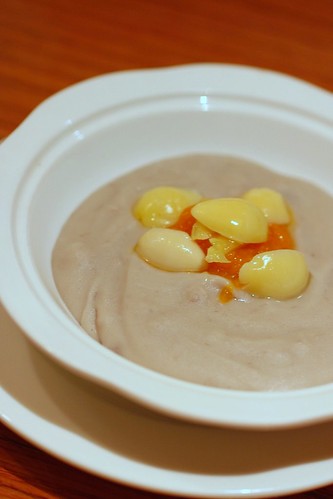I have to admit when I received the invitation to review
Chaozhou Inn, my mind went blank. I struggled to remember if I have heard or seen this restaurant before. A little homework later, I found out that this is actually part of the
Fish & Co., group. I was duely intrigued but was unable to associate the ubiquitous family seafood restuarant with... authentic Teochew cuisine.
Tucked away at the basement of
Parkway Parade shopping center, Chaozhou Inn was a stark contrast to Sakae Sushi next door. The modern oriental setting was tasteful and ... haute. One almost feel a little intimidated because it looked...too nice to be a family restaurant. However, dear readers, be fearless and you shall be delighted. Featuring a comprehensive but very relevant selection of Teochew dishes, this is a delightful discovery.
The Teochews, who hailed from eastern Guangdong province, is the second largest Chinese dialect group in Singapore. Teochew cuisine is definitely among what I like refer to in Chinese as Big Cuisine, 大菜. You will find Teochew restaurants in Hong Kong, Taiwan, Malaysia and Singapore. The very best fine dining Chinese restaurants in Singapore are generally Cantonese or Teochew. Cantonese cuisine, characterised by savoury, robust flavours, appeals to our craving for richness. Teochew Cuisine on the other hand, focuses on retaining the natural flavours and freshness of ingredients. With little additional seasoning, Teochew Cuisine is famed for being clear, subtle and intricate. (清,淡,巧,雅). While it is easy to find mid market cantonese family restuarants in Singapore, I can't seem to recall coming across too many authentic Teochew restuarants that are positioned for the mid-market segment. Chaozhou Inn seems to fill this gap perfectly.
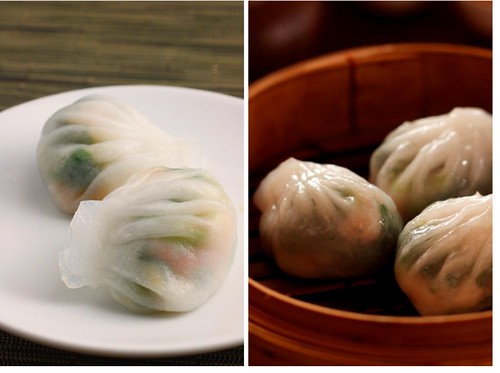
The tasting menu I was served included some of their signature dishes and 3 new dim sum creations. First on the list is the chef's new
Steamed Spinach Dumpling with Prawn & Dried Scallop (瑶柱菜苗饺). Commonly prepared with Chives, this is created specially for those who do not take well to the pungent smell of chives. Without the chives, the dumpling is decidedly less exciting but the sweetness of the prawns and dried scallops more than make up for this subtle morsel.
Next, came the
Braised Pork Belly Bun Chaozhou Style (鲍汁扣肉包). I am not an expert when it comes to braised pork belly but I suspect that this may not be juicy or 'melty' enough for pork belly die-hard fans.
The winner for me among the new dim sum creations was the Pan Fried Black Sesame Cake (豆沙煎软饼). Pan fried to a slight crisp, the rice cake remains soft. I love it that the bean paste filling was just sweet enough, and this, eaten with the fragrant crunch of the sesame seeds was really delicious. Restrained by social graciousness, I had to stop at one but I know I would gladly finish the whole serving of 3 cakes.
No respectable Teochew restaurant will be caught without really good braised dishes on their menu. (滷水拼盤)
Teochew braised dish often involves the slow braising of Goose, Goose Gizzard, Goose Liver, Tofu , Pork Intestine etc in a special sauce prepared with a complex mixture of over 10 Chinese herbs and spices. Chaozhou Inn's braised platter stays true to its Teochew roots. Most of the braised dishes we get in Singapore tend to lean towards the richer taste of cantonese cuisine. Chaozhou Inn's preparation is authentic and I hope Singaporeans will learn to appreciate it.
Similarly, no respectable Teochew restaurant will be caught without steamed fish on their menu. Their best selling steamed fish is the Teochew Steamed Pomfret. Steamed with pickled mustard cabbage, tomatoes and plum, this dish yields a clear broth that is so light and fresh that I can litereally slurp it up like a soup. Unfortunately, the pomfret was a little overcooked. When informed, chef Francis Yu conceded that the kitchen could have steamed it for an extra minute too long. I certainly hope to revisit this soon.
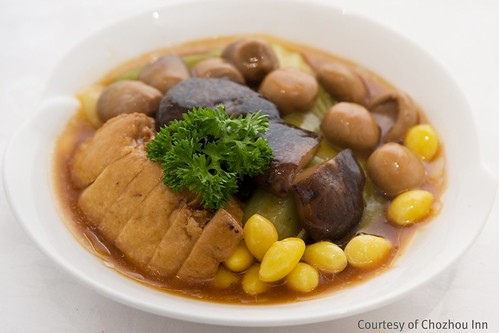

If you are one who enjoys a good soup, you will not be disappointed by their popular Double Boiled Old Yellow Melon Soup (八宝老黄瓜炖盅). Priced reasonably at $8 per melon portion, this light and invigorating soup is truly value for money. I enjoyed it so much that I actually contemplated making it at home. However, I decided that it would be unpractical for, to even remotely achieve the same effect, I will have to steam this for hours. The amount of gas I will have burn over this one little melon - it would be better for me to pay $8 for it!
The vegetable dish on the tasting menu is another one of their best selling dish.
Chao Yang Four Treasure Vegetables.(潮阳四宝蔬). Prepared with Mustard cabbage, Tofu, Dried Mushrooms, Straw Mushrooms and Gingko Nuts in a abalone sauce, this is a very memorable dish for me. I was pleasantly suprised by the tenderness of the Mustard Cabbage - it literally distingrated in my mouth. This is certainly different from the crunchy texture that I usually eat.
Another must-try is the Yam Paste With Gingko Nut and Pumpkin (福果芋泥) . If you have seen floating oil scimming the surface of this popular Teochew dessert once too often, you will be happy to know that Chaozhou Inn's Yam Paste is smooth and creamy... sans the oily heaviness. Chef Yu shared his little trick with me but I would encourage you to go taste it and discern that interesting element :) .
All in all, I was really thrilled about finding Chaozhou Inn. I have no doubt that the authentic Teochew menu, great dining ambience and the affordable price list will win diners over.I don't think this would be politically correct, but I really think we can do with more Chaozhou Inns and less Fish & Co...
For all Singaporean readers who are reading this, there are $20 vouchers to be given out to 3 lucky readers. This would be a great chance to check out Chaozhou Inn. I am going back again to check out their weekday a la carte buffet dinner. Impressive menu priced at $23/ head - it's too important to pass.
To win the $20 voucher, please leave me a comment telling me about your favourite Teochew dish. Make sure I have access to your contact details...Last day for entry will be on Sunday, 8th August! Bon Appetite!
A big thanks to Sharon Poh of Fish & Co., for inviting me to the food tasting session.
80 Marine Parade Road, B1-84D,
Parkway Parade, Singapore 449269
Tel : (65) 6346-6617
Store Locator Here
